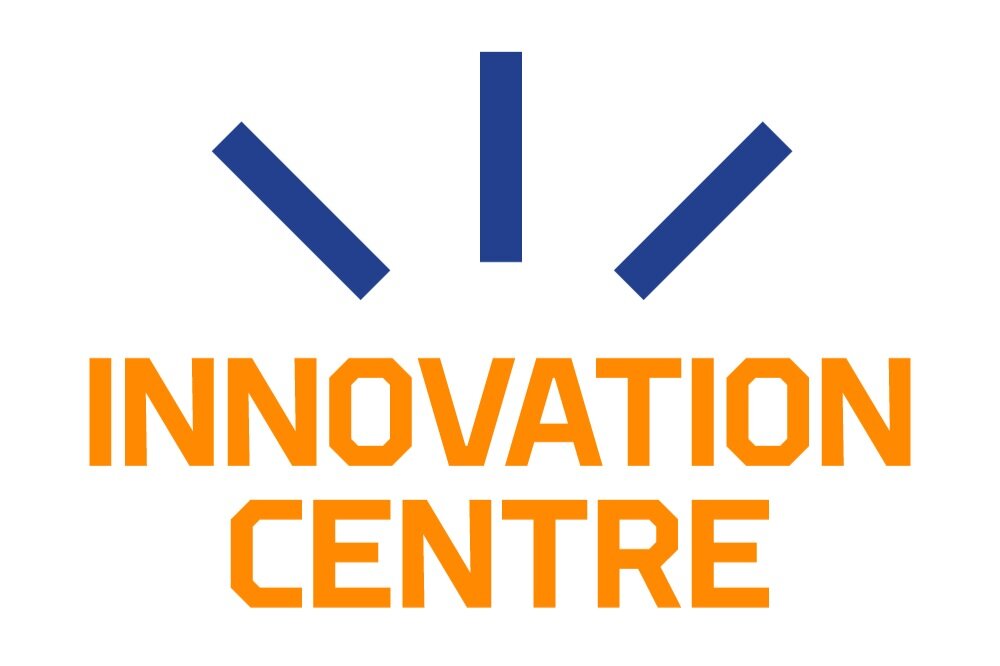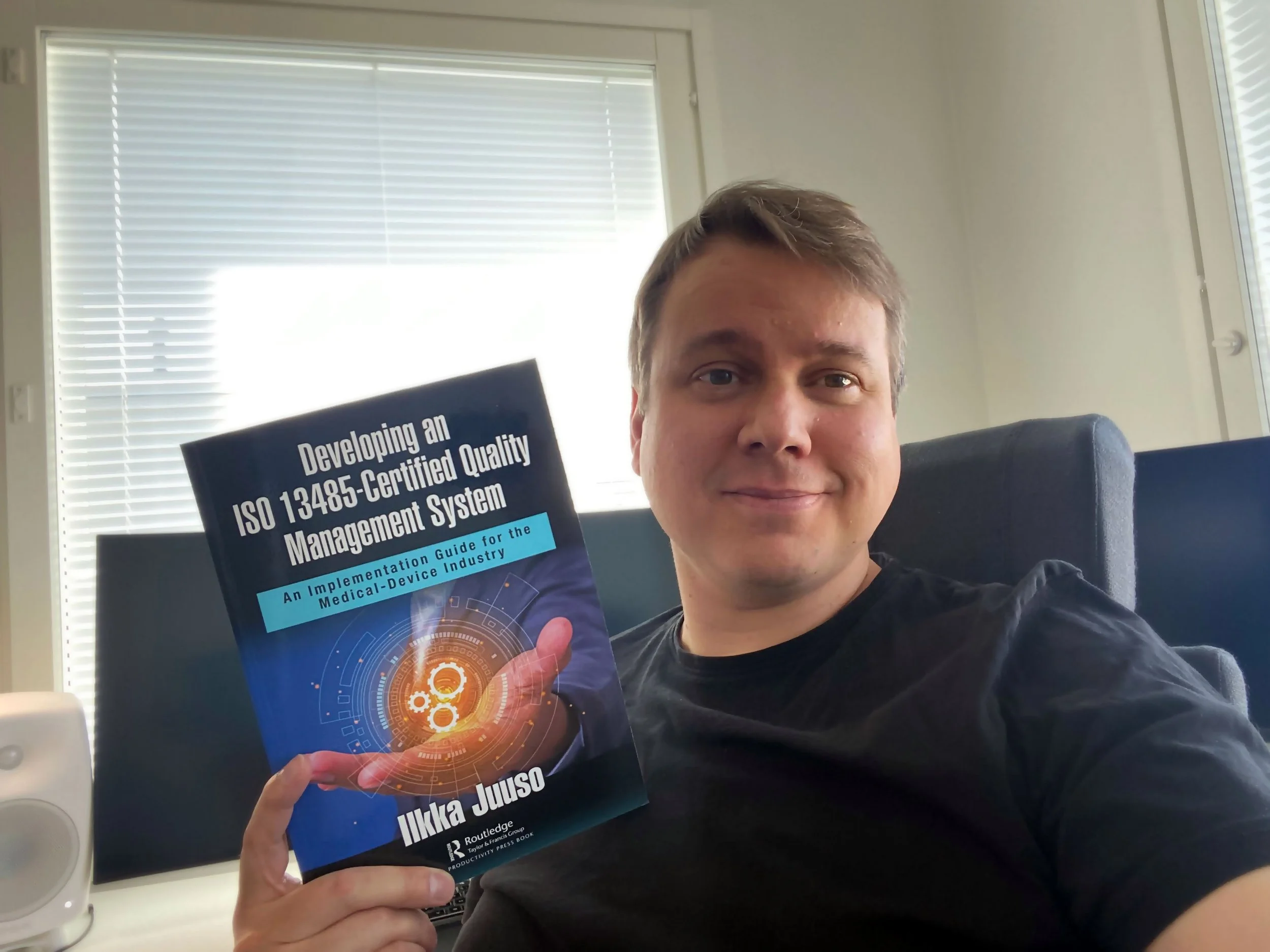Towards standards and across them – How Ilkka Juuso became an entrepreneur and non-fiction author
Twenty years spent at the University of Oulu resulted in a tool for measuring brain function, which was commercialised through Cerenion Oy, a developer of medical devices. Ilkka’s first non-fiction book, dealing with the ISO 13485 standard, emerged a while later. All in all, what has happened along the way?
The InnoVisitor series of events, organised by the University of Oulu Innovation Centre, kicked off with Ilkka Juuso’s visit on 12 May. Ilkka’s fascinating path from researcher to entrepreneur and non-fiction author, involving the development of a medical device, drew listeners both in person and online.
Ilkka and Cerenion Oy – How did it all begin?
Ilkka Juuso began his studies at the University of Oulu in the field of information technology at the age of 18 and spent 22 years at the University both as a student and doctoral researcher, working on various projects. He continues to cooperate with the University.
Ilkka entered the field of medical devices with Cerenion Oy, which he joined in connection with a TUTLI project of Tekes, the predecessor of Business Finland. Ilkka was not the father of the idea as such, but his skills came in handy when commercialisation of the idea became relevant.
Cerenion Oy is a research-based spin-off company of the University of Oulu, which offers a tool for measuring the brain function of patients in intensive care. The patented technology reveals the status of the brain as a single score, based on EEG measurements combined with advanced machine learning and artificial intelligence.
Concerning the product’s commercialisation, Ilkka’s responsibilities primarily involved designing a quality management system that complied with the ISO 13485 standard and developing an IEC 62304-compliant software production process.
Ilkka’s academic background helped him grasp all the requirements; there was plenty of work to do. After a three-year process, all the requirements posed by EU legislation had been satisfied, and the company was able to put a CE marking on its product, qualifying it for sales in the EU market.
However, not all of the work carried out in the three years focused on standards. Time was also spent on building the company, recruiting employees and sorting out insurance matters. After tough negotiations, a new regulation on medical devices was introduced in Europe, which also had to be adopted while product development continued. The world continues to change, and the company develops along with it.
Recording your competence and acquired knowledge on paper, that’s how a non-fiction work comes into being!
According to Ilkka, networking with various national and international groups has been a key element in his work with standards, for example. His own competence and knowledge have increased a lot over the years, as has his opportunity to influence matters.
“It got me thinking that all the knowledge I’ve accumulated could also be of use to others in the field, especially those just entering it. But how and in what format?” After a guest visit to Denmark and numerous corridor discussions, the idea about a practical non-fiction book began to take shape. The idea met with support in several expert groups both in Finland and abroad and gradually began to seem like a viable idea.
After a kind of competitor analysis and a search for a suitable publisher, an agreement on the book was drawn up, and the writing itself took place over the year alongside Ilkka’s other work. At first, the illustrations created challenges in the fact-filled book, but with the help of a pen and tablet, drawings and word clouds were successfully interspersed with the text. Experts also provided valuable help in the process.
Ilkka shared a fun personal fact with the audience, revealing that since his doctoral dissertation, he has written thousands of film reviews which have offered a channel for his writing energy. Therefore, writing a non-fiction book was anything but a boring task for Ilkka. Quite the contrary, he considered the project an inspiring hobby with which he was happy to spend his leisure time.
Why write a non-fiction book?
First of all, as Ilkka points out, writing a non-fiction book may not make you rich, but it is something you can cross off your bucket list.
For Ilkka, the book was a way to analyse everything he had learned over the years and share it with others. It was also a way to learn new things and engage in deeper conversations in networks in the field.
According to Ilkka, the project also offered him a cathartic experience as he was able to hit back at a theory he had worked with for years. (Yours truly had to google the word and its meaning.)
The project only whet Ilkka’s academic appetite, and he is already working on his next book project. In it, he will focus on another key standard for the development of medical software.
Ilkka’s other thoughts – university background, credibility and financials
Cerenion is a university-based start-up, and Ilkka considers the background a definite bonus. A university background lends credibility to the company, influences the level of discussion, serves as a kind of quality stamp and helps the company stand out. Ilkka encourages people to make use of Business Finland’s Research to Business funding and calls it an excellent runway for the development of medical devices.
However, if you’re not as attracted to standards as Ilkka, but have a new product under development, there are also quality consultants in Finland that can help you. After all, standards cannot be bought off the shelf – a quality management system must be adapted to each company’s needs, paying attention to the size of the organisation.
Surveying potential investors suitable for your product is another key task in the development of new medical products. According to Ilkka, the funding environment in Finland is positive, but the invested sums are not yet particularly high. Ilkka urges funding seekers to determine what is an adequate first version that will convince the enablers of the next step and help carry on with the evolution towards the perfect product. This is known as the Minimum Viable Product in the business.
What comes next?
As his last words of encouragement for future entrepreneurs in the field, Ilkka says that university hospitals are one of the best starting points for problem-solving concerning medical devices.
If I were to begin developing a medical device now that I’ve been to the InnoVisitor event, I would definitely know what expert to contact when the standards get me on edge.
And the word cathartic? It means cleansing and liberating.
Thank you, Ilkka Juuso, for participating and sharing interesting content with us! Ilkka’s first book, “Developing an ISO 13485-Certified Quality Management System”, is available from Amazon and as an e-book from Adlibris. Ilkka can be found on LinkedIn.
Emilia Hoikkaniemi
Yliopistoharjoittelija // Intern
+358 50 346 9906
emilia.hoikkaniemi@oulu.fi
Innovaatioviestinnän harjoittelija kesällä 2022, blogitekstit, uutiset, sosiaalinen media, tapahtumaviestintä.
Innovation communications intern in Summer 2022, blog posts, news, social media, event communications.



